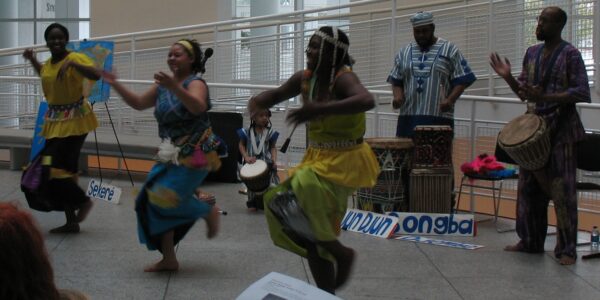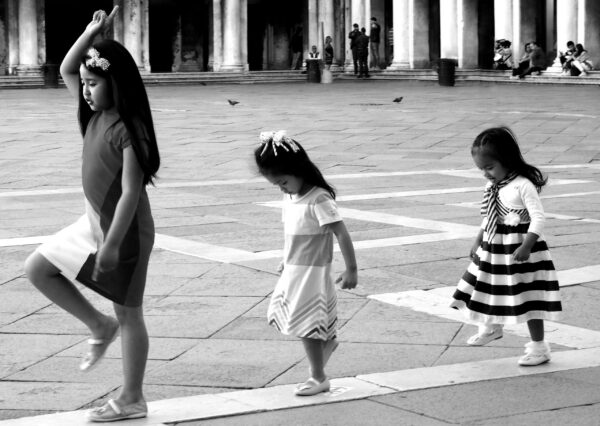
Why it is important to teach your child about their cultural heritage
A child's cultural heritage has so much to teach them. By learning about their ethnic roots, they learn about geography, history, culture and language, human migration, agriculture, and, just like with nature's lessons, human interconnectedness. This is why it's crucial to teach your child about their culture heritage.
You might be saying, “I'm a white American. What is there to learn about that?” or “My family is from Mexico. I already know that and we already celebrate our culture.” Or “My ancestors were brought here on slave ships. I don't know anything further back than that to teach my child!”.
But, what if I told you that your child is more than just, White, Black, Hispanic, Native American, or Asian? What if I told you than if you are Mexican, you most likely have Native American in your DNA…and maybe even a little Irish? Wait, Irish?!
What if I told you that even though you identify as a white American, you actually have quite a rich cultural heritage that might reach far beyond Europe?
And did you know that a DNA test can pinpoint the areas an Africa that many African Americans originally came from? Some DNA testing cites can even trace where in America your ancestors were brought!
Stories passed down don't always tell the whole story
I have always heard my mother tell us that we were Polish. It didn't mean much to me as a child.
But, she always made Borscht when I was growing up…that's a Russian dish! So, I wondered where I was really from!
Where she was really from! How did a Polish family grow up eating a traditional Russian dish?
We are still uncovering answers about our family's heritage, and it's very exciting!
Then there is my husband. He is half Filipino, but his Filipino mother passed away before I even met him.
He doesn't have many memories to share or traditions to pass down to our children. So, that has put me on a quest to teach our children about their Filipino heritage.
Celebrate your mixed heritage
As we marry and have children with people from different cultures and races, this scenario becomes more and more common. It's not a bad thing, though, blending races and cultures. In fact, it gives us even more to discover; even more to celebrate!
How do we find our true ethnic roots?
So, how do we find out our true ethnic roots? And how do we teach our children about their heritage, along with some of the customs and traditions?
Well, the answer to the first question is an easy one. Don't only rely on stories passed down from the generations. Don't even rely on family trees, meticulously built by family members. Remember, people tend to exclude ethnicities from their trees that might bring them embarrassment or challenge their beliefs about their heritage.
DNA has the answers you are looking for
It's best to go right to the source. DNA.
And you don't have to open the door to being contacted by half-siblings of 4th cousins twice removed. You can take the livingdna.com test and get only the answers to your ethnicity questions. (Your information can, if you like, be transferred to a site that will give you DNA matches…if you ever get curious!)
Finding out your child's ethnic roots
To find out your child's true ethnic heritage, you have two options. 1) You and the other parent can both take the livingdna.com test. 2) You can submit your child's DNA only.
Obviously, option #2 comes with some questions of ethics and consent. Personally, I would have no problem sending my kids' DNA for analyzation. I'm actually quite curious to see how each of their DNA results will differ, as one of my children has dark skin and distinct Filipino features and the other two very much favor me.
So, however you decide to learn your child's DNA is up to you. But what then? How do you incorporate their ethnic heritage into their lives?
Introducing your child to their cultural heritage is easy
You don't have to go to the extreme when you teach your child about their cultural heritage, unless you really want to.
I suggest starting with some simple things when you teach a child about their cultural heritage, like cooking a traditional dish from your child's region of origin!
My children enjoy Lumpia. It's a traditional Filipino dish. It's more than just food to us, though. It's a connection to their ethnic roots; it's a connection to the grandmother they never got to meet.
It's a conversation starter that always brings the family to the map or the globe after dinner to talk about where the Philippine Islands are, what kind of transportation someone might use to travel there, and what family members they have that live there.
When my kids are older, there will be much more detail we can go into with them. But for right now, tasty dishes and fun conversations are working out just fine.
You can also research traditional dress from that region and put something similar together for your child to wear!

You can check books out at the library or find sites on the internet that show traditional garb. Above, is my daughter dressed in an outfit we made that you might see many children in the Philippines wearing.
Your whole family can learn words and phrases to practice with each other as another way to connect with your child's cultural heritage. We've had so much fun learning bits and pieces of Tagalog!
Also, learn about games children from that culture play and learn them yourselves!
Games are a fun way for kids to connect with their ethnic roots
For example, in Ireland, kids play a game called “What's the Time, Mr. Wolf?” Here is how it's played:
One child is chosen to be Mr. Wolf, who then stands at one end of the playing area.
The other players stand in a line at the other end.
Mr. Wolf turns his back to commence play.
The players call out, “What’s the time Mr. Wolf?” and Mr. Wolf turns and answers with a time (i.e. 3 o’clock).
He then turns his back again while the children advance again chanting “What’s the time Mr. Wolf?” To which Mr. Wolf will continue to respond until the players come very close.
Once the line of players is close to Mr. Wolf, he can respond to the chant with “It’s dinner time!” at which point, he will chase the players back to the starting line with the aim to catch one of the them, who will then become Mr Wolf for the next round of the game.
(Game instructions found at www.kidspot.com/au)

This is just one example of a game! Kids from all over the globe have their own sets of playground games!
Incorporate music in teaching about their ethnicity
Listen to music from the region(s) you originally came from. Kids love music, and what a treat for them to be able to listen to such an eclectic variety….and the dances that go along with the music! There is so much fun to be had when you teach child about their cultural heritage!
More importantly, learning about their heritage can boost their self-esteem!
So, why not!? I say, give it a go! This journey is fun, informative, and can be quite delicious!
If you get your livingdna.com results back and you feel a little lost, there is an amazing website called whoareyoumadeof.com that can help you figure things out!
Good luck!
I am always open to feedback!
If you enjoyed this article, please share with family and friends!
Cheers!

Pingback: Is it Okay for Children to Take DNA Tests? - Who are You Made Of?
Pingback: How to Teach Your Young Child About Nature – Parenting with Purpose